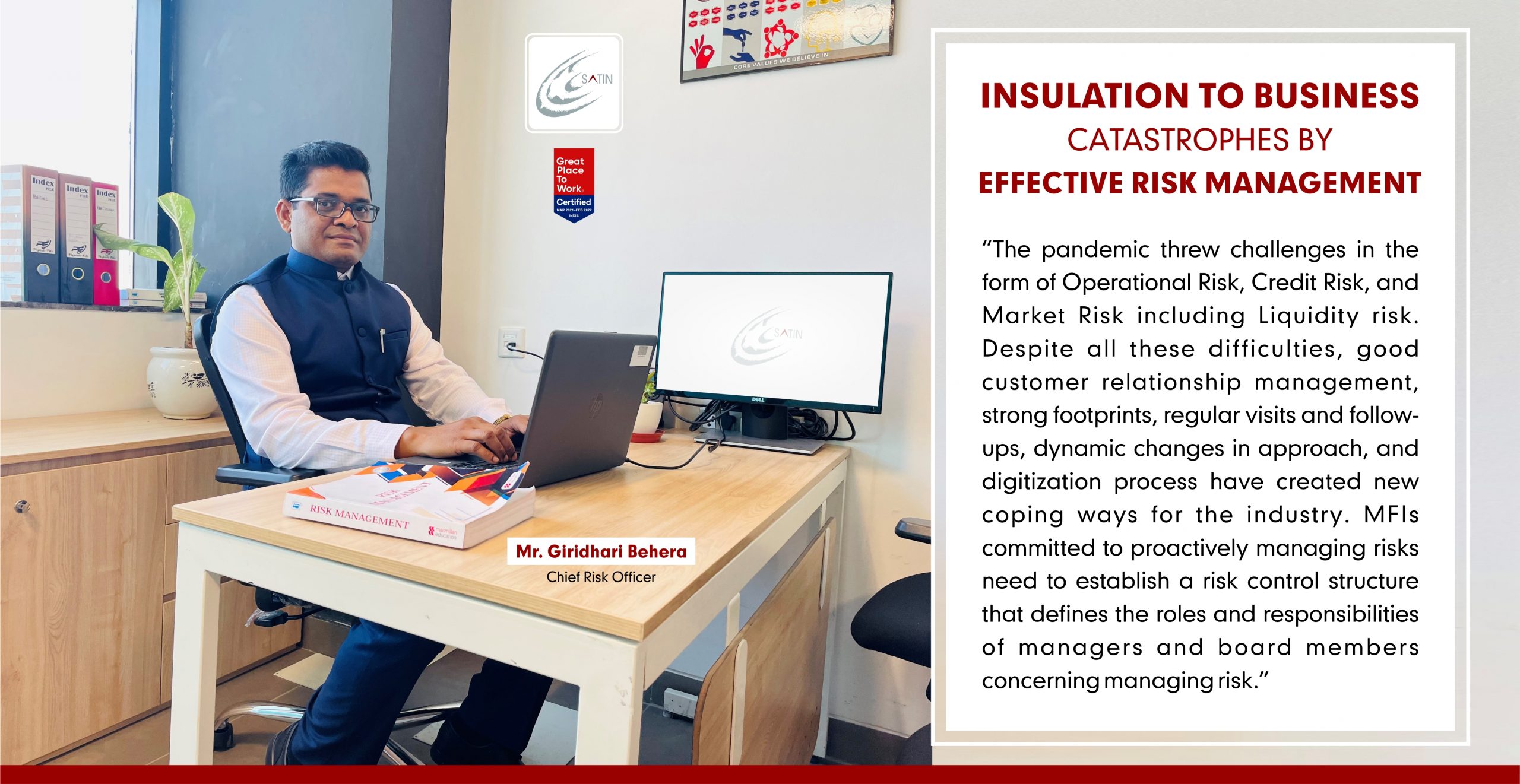
We all acknowledge that the COVID-19 pandemic threatened lives and livelihoods, and created even more challenges for institutions that serve the bottom of pyramids of the society. Microfinance Institutions (MFIs) are successful and sustainable across the globe because of their Micro People Management and Field Discipline. Even if any of the two is compromised, it is very difficult to revive the MFIs. During lockdown, the critical challenge was to get the repayment from customers through individually since the centre meetings cease to take place, even as the loan was disbursed through Joint Liability Group (JLG) model, where a group of women borrow and provide social collateral against the total borrowings of the group jointly.
Risk Implications
The pandemic threw challenges in the form of Operational Risk, Credit Risk, and Market Risk including Liquidity risk. It impacted systemic risk for the MFI sector with reference to field discipline. During lockdown and social distancing as the new norm, the occurrence of operational risk (People, Process, and System) was witnessed. Besides operational risk, external events like tropical Cyclones of Amphan, Bihar & Chennai deluge, Farmer protests, Assam Microfinance bill, and political campaigns also brought disruptions in the industry. Creditworthiness, loan moratoriums and restructuring, and reductions in lending led to an increase in credit risk and threat to the asset quality for the entire BFSI sector. As a part of market and liquidity risk, discontinuance of centre meetings caused by the pandemic has led to a drop in collection efficiencies, as a result, the cash outflows were higher rather than the cash inflows, and created liquidity mismatch. It led to a reduction in earning capacity and profitability of the industry. Despite all these difficulties, good customer relationship management, strong footprints, regular visits and follow-ups, dynamic changes in approach, and digitization process have created new coping ways for the industry.
Decade of Challenges
The MFI industry has already witnessed four crisis events (World Financial Crisis-2008, Andhra Crisis-2010, Demonetisation-2016, and Covid-19 Pandemic – 2020) within 12 years. After considering the growth, systemic risk, liquidity crunch, and stress in the sector, now RBI has come up with Liquidity Risk Management Framework & LCR norm w.e.f 1st Dec’20 for applicable NBFCs and a new discussion paper on regulatory guidelines for NBFCs with a scale based approach. The objective of this discussion paper is to revisit the broad principles which underpin the current regulatory framework and examine the need to develop a scale-based approach to regulation from a ‘systemic significance’ vantage point and recommend appropriate regulatory measures in support of a strong and resilient financial system. The NBFC segment shall cope with the scale-based approach once it comes into force.
Focus on areas of improvement
The pandemic has continued to create new challenges for microfinance institutions. While the nature of these institutions has allowed them to apply successful response policies broadly, the pandemic has also highlighted new ways for this sector to grow and improve in the form of capacity building (E-learning module, departmental training), offsite monitoring with quality analytics, digitization of collection and disbursement process, focus on audit digitization and in house application for incident reporting, revisiting the existing policies and processes, establishing risk management culture and awareness and focus on Key Risk Indicators and risk control self-assessment.
Risk Management
When one thinks about financial inclusion, one typically focuses on small loans to enhance income and create jobs. But, finance can also be used to manage risks. The microfinance sector globally is going through challenging times because of disruptions to the economic activities of the customers. Ups and downs are part of business cycle. We have to live with internal and external events, at the same time we should be ready to face these challenges with our well-defined preventive and proactive internal controls, risk management process, framework, and monitoring tools. A successful risk management process requires the basic guidelines such as:
- To lead from the top, incorporate risk management into systems design, keep it simple, involve all levels of staff,
- Align risk management goals with individual goals,
- Address the most important risks first, assign responsibilities and set monitoring schedule,
- Design informative management reporting to the board,
- Develop effective mechanisms to evaluate internal controls, manage risk continuously using a risk management feedback loop.
Conclusion
The key to fulfilling the responsibility of providing reasonable assurance to stakeholders that the business is in control is the development of a comprehensive system of management controls, accounting and internal controls, security procedures, and other risk controls. MFIs committed to proactively managing risks need to establish a risk control structure that defines the roles and responsibilities of managers and board members concerning managing risk.
We have also taken the opportunity to learn from this crisis about ways to improve while moving forward. Overall, these institutions must focus on the long-term value-addition of their networks, whether through increased digitization or policy guidance and learn from the lessons of COVID-19 to ensure sustainable future success.
Mr. Giridhari Behera (Chief Risk Officer)
Satin Creditcare Network Ltd
- Date: 6th April’21
- Client: Mr. Giridhari Behera
- Category: Blogs
